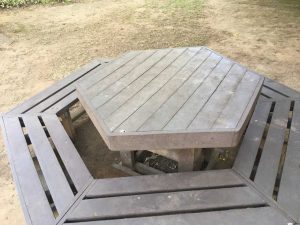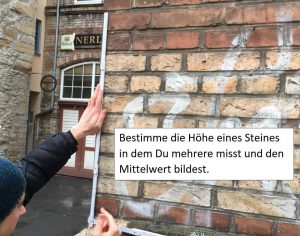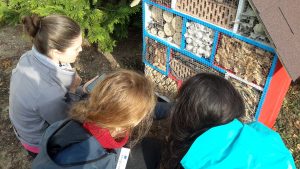Today, MCM talks with Jörg Kleinsteuber (MCM Educator) about the task of the week in Apolda, Germany.
If the wooden crocodile would come to life and eat, the goldfish would have “bad cards”. Decide what amount of food would need a mature 6 meter specimen compared to a crocodile the size of the wooden crocodile.
What is the task about?
The beautifully carved wooden model is a small version(centric extension) of a crocodile. Since the length of a full-grown crocodile is a multiple of the model, this unusual task can be created from it. Already in the book “Gulliver’s Travels” by Jonathan Swift, the 12x larger Gulliver got the clothing (surface) of 144 Lilliputians and his food portion would have been enough for 1728 by the Winzlings. This mathematical effect of the stretch factor on the area and the volume is always amazing. I chose Multiple Choice as the answer format because I did not want to measure exactly, but to understand and apply knowledge.
For what purpose was the task created?
The task was created for a workshop with teachers on the SINUS-Landtag https://www.schulportal-thueringen.de/sinus_thueringen in Apolda (in the Hotel Am Schloss https://www.hotel-apolda.de/).
When we went to the conference, I got a shock – the crocodile was gone … and thus the task is no longer solvable.
The conference manager spoke therefore with the hotel staff and the caretaker then took the crocodile from hibernation from the basement (great service, thank you!)
So the participants could still solve this unusual task; It was a tough nut, but it was fun.
Afterwards, I even thought about exchanging the photo so that the size of the crocodile can be used to determine its size, even if it sleeps in the cellar in winter.
What do you like about MathCityMap?
What fascinates me about MCM is the combination of classical mathematics with digital support. Mathematics does not have to mean complicated bills and expensive applications. Small tasks with practical relevance, in which the students themselves have to become ACTIVE by measuring, modeling, estimating, and discussing in small groups offer plenty of potential for student activities.
The possibility of using the smartphone as a support is self-evident for students and at the same time motivating. At the same time this reduces my effort in the care, because the APP provides feedback in the form of hints, model solutions and also offers gamification (points). A great mix!
The new “digital classroom” allows me to chat with students while they are completing tasks (answer questions) and I can see their walkways while they’re on the trail.
In the follow-up in the classroom we had very stimulating discussions about the tasks.
Thank you for the interview and your commitment to MCM!













